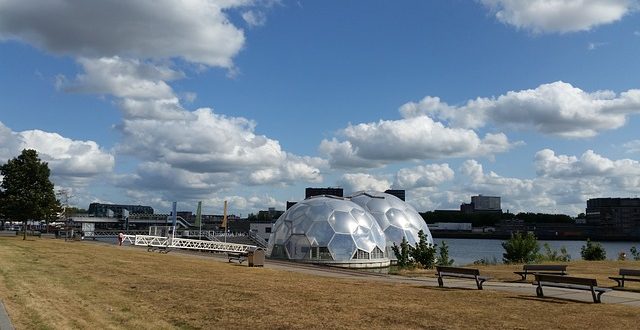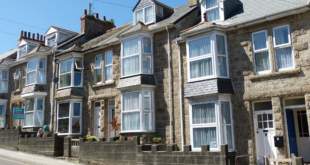TV clips of old Ideal Home Shows or similar always create interest. We find enjoyment in seeing what earth-braking ideas came to fruition and what ones got lost in obscurity. Without programs such as Tomorrows World on TV today, we perhaps think less about the homes of the future, so what does the Homeowners Club foresee.
The 1960s
Back in 1963, Prime Minister Harold Wilson spoke about the ‘white heat’ of scientific revolution. Technology moved fast, sweeping away the past not least in housing. After centuries of building traditional streets and houses, the UK started building upwards using new materials and methods. Inner cities were transformed by slum clearance being replaced by the new towering estates. New Towns outside of the green belts became home to thousands.
Inside our homes, change was more evident. Appliances sales were booming, easing household chores, all helped by the relaxation of credit restrictions. Central heating was replacing open fires and we got a taste for travel! Using more rather than reducing energy was the norm and environmental concerns largely unknown.
Fast Forward to Today
The sixties politicians and planners intentions were good and achievements in terms of house building volumes impressive. Unfortunately, much of the work has not stood the test of time. Unfamiliarity with the new construction methods, cutting of corners and poor workmanship have taken their toll, in addition some estates have suffered social issues. The outcome for many is that the sixties from a housing perspective is viewed negatively. Even privately developed homes of the era are less desirable than newer or older alternatives for many buyers.
Architecturally, the clock has gone backwards, at least in appearance. Houses, Flats and even some Offices now take design cues from history. Outwardly at least, new buildings use traditional materials and architectural features. By varying designs along a street or in a development, streetscapes improve.
Behind these traditional looking facades though, a revolution has occurred. The modern building is more fuel efficient, drier, quieter, more automated and easier to look after. Interiors are more practical, living is more open plan, bathrooms more luxurious and space better utilised. Kitchens have seen the most change, providing space for dishwashers, freezers and driers; room for entertaining and eating and in many cases somewhere to sit and relax. Little used “best” rooms for sitting and dining are increasingly rare.
Technology is advancing with internet connected televisions and smart meters with much more to come.
Homes of the Future
Looking back at some of those 1960’s predictions, many home technology developments were accurately foreseen. They were less successful when it came to predicting architectural tastes and town planning. The impact of climate change and the need to reduce our dependence on fossil fuels hardly got a mention.
Predicting the future, as politicians will vouch for is not easy, but here is our go at what our children can expect.
Design
British vernacular styles of housing go back centuries, over time architects have returned to them tweaking and updating. As tradition sells, the market will provide. Though there will be space for revolutionary designs volume developers will stick to a working formula.
Ecology
Despite the shelving of plans for new homes to be zero carbon by 2016, improving energy efficiency remains a key priority. CO2 emissions from housing makes up nearly a third of the UK’s greenhouse gas emissions. To achieve the 80% reduction in carbon emissions committed to, housing has to pay a key part.
Today’s homes are far more efficient than those of the sixties and before, but there are still many areas to improve;
- Solar shading
- High-performance glazing
- Use of sustainable materials
- Improved insulation (we still lag other european countries)
- Solar panels
- High efficiency boilers
- Heat recovery from waste water
- Use of waste water for flushing toilets
Technology
The visionaries of the sixties foresaw dimming lights, automatic machines and remote control, few if any could imagine computer technology would be found in a fridge. Technology will have its place both in improving our quality of life and in playing it’s part in improving energy efficiency.
- Air and ground source heat pumps
- Automatic shutters and Intelligent ventilation systems
- Control systems able to operate remotely virtually any appliance in the house
and to improve our convenience, how about;
- Automatic re-ordering of groceries etc.
- Intelligent clothes telling you when they need washing
- Learning entertainments systems
- In-house health checks
Any further ideas are welcome, what do you think?
 Homeowners Club If you are one of the 15 million homeowners in the UK, the free to join online Homeowners Club is for you.
Homeowners Club If you are one of the 15 million homeowners in the UK, the free to join online Homeowners Club is for you.








